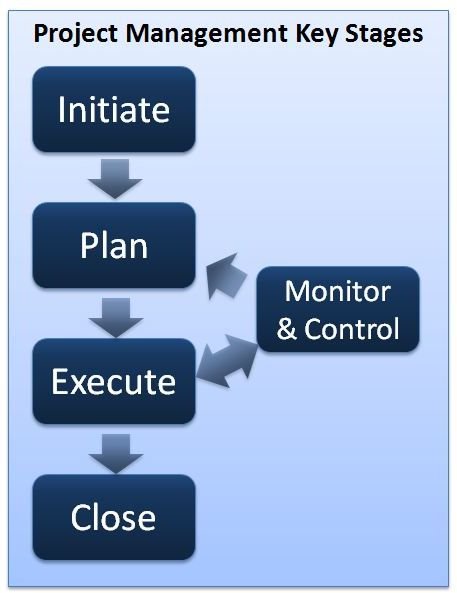Project Management Key Stages - What Are They?
Project Initiation
Project Initiation is the first of the five key stages within project management, and sets the course for the remainder of the project. During this stage you will understand the business need and purpose of the project, generally by creating a business case. The business case should describe the business context around the project and define the measurable goals or outcomes that the project aims to achieve.
You will need to identify the key sponsor of the project - someone who will establish the charter to carry out the project, provide adequate funding, and remove roadblocks as they occur. In addition, the initiation phase is when you will appoint the project team that will execute the project, and identify the key stakeholders who will be involved in the entire process.The initiation ph
ase is also when you will define the scope of the project, such as what will and will not be delivered. This part of initiation is particularly important, and when done right will greatly improve the success of the project.
Project Planning
While some planning may be done during project initiation, this is the key stage to do heavy lifting around planning the project’s resources, timeline, and finances. In planning a project, you should clearly define the project deliverables and activities necessary to create those deliverables along a logical timeline. This is often done by creating a work breakdown structure, or WBS. You should also estimate the resource needs of a project, aligned against the activities in your plan.
The planning stage is where you will develop the project budget and schedule. The budget should incorporate the resource costs associated with the project activities, as well as any other capital expenditures. The schedule should lay out the project activities such that resources are utilized in the most efficient manner while avoiding conflicts.
Project Execution
Now that you understand what you are doing (the scope), and how you are doing it (the plan), it is time to execute. During this phase, you carry out the project activities according to your plan. During this key stage, you will need to be active in managing a variety of factors such as the quality and timeliness of work, potential issues or risks, and communications with stakeholders to ensure that your project stays on track.
Monitoring and Controlling a Project
The key stage of monitoring and controlling a project runs parallel to the execution phase, and acts as a feedback loop between execution and planning. This allows iterative development of your project as you encounter issues during execution. The key activities of this phase are measuring the current state of the project, comparing that to the baseline, and identifying actions to keep the project on track.
Closing a Project
And now you are done! During the closing stage of a project, you finalize all project tasks, and archive important documents for future reference. During this phase you will hand over project deliverables to the end customer or recipient, close any open contracts with suppliers, release project staff, and report the project success to the sponsor. It is also important to fully document the entire project including the lessons learned, and archive the results with the business so that future projects can build off what you have done. Your business may also conduct post-project reviews several months after closing a project, to measure and document the success of your project.
